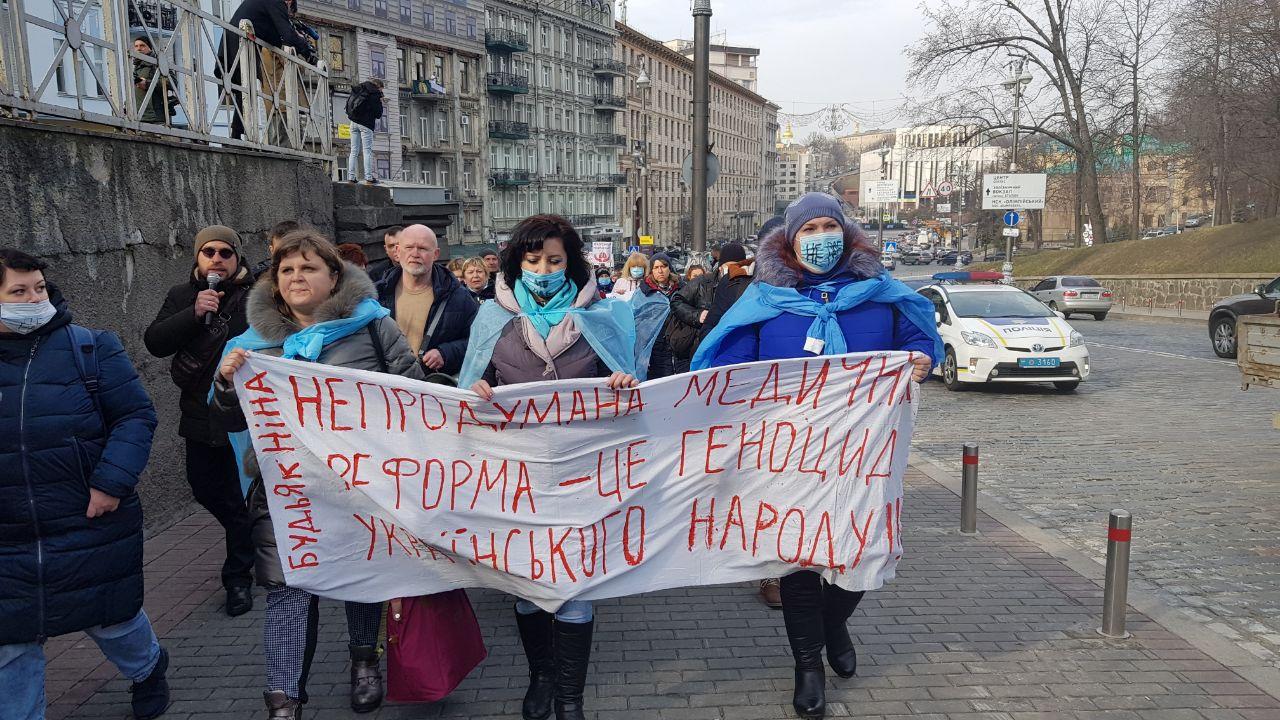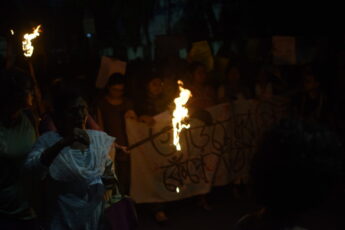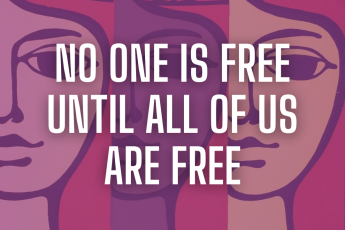
by Oksana Dutchak (Ukraine)
The present text, which we co-publish together with LevFem and Lefteast, is part of a series of publications on struggles in social reproduction, (women’s) labour and migration in Eastern and Central Europe and beyond organized within the E.A.S.T. (Essential Autonomous Struggles Transnational) network. Oksana, who participated in a webinar on care workers, women and migrants during the pandemic, focuses on the Ukrainian public kindergarten system. In this system 90% of workers are women who get slightly more than the minimum wage and thus often need to regularly work overtime, or perform subsistence agriculture, side-jobs, seasonal labor migration, and are affected by chronic indebtedness. Kindergartens are overcrowded in cities and lacking facilities in villages, and the situation is even worse close to the war zone. With the pandemic, mothers were left even without this support and when the kindergartens reopened, they provided fewer places and lacked personal protections. While devaluing women’s work in the public services, and their domestic labour – which dramatically increased during the pandemic – the Ukrainian government is putting the burden of the management of the pandemic on their shoulders. Some protests, both virtual and in real life, show that women and workers are more and more fed up with this situation. The open question is how to turn this rage, which is shared by essential workers everywhere into a collective response: an essential strike to overturn the conditions that oppress us on the transnational level.
The ongoing COVID crisis highlights the deep crisis of the current system and the futility of liberal attempts to overcome gender inequality without addressing its root causes. Since the beginning of 2020, we have seen the “progress” of cosmetic liberal reforms, promoted on the global level and implemented by local governments to a varying extent, collapsing like a house of cards and revealing deeply rooted, structural problems. These problems derive from the hierarchies of the current capitalist system, with its artificial separation between economy and social reproduction, and between the spheres of finance, production and reproduction. These hierarchies lead to the devaluation of both paid and unpaid reproductive labor – including care labor – and a deep dysfunctionality of reproductive infrastructure (healthcare, education, childcare etc) due to its subordination to the needs of capitalist accumulation. With the arrival of the crisis, the lion’s share of reproductive work has been pushed back onto families, with the pretext that they will “manage somehow”. Which usually means that women will manage somehow – with all the deepening gender inequality implied.
My colleagues and I[1] have been doing research on the Ukrainian public kindergarten system throughout the year. This sector is quite an illustrative case for the study of care, social reproduction and gender inequality, as it is predominantly (90%) female and, as the most universal option of pre-school childcare, it has a paramount impact on mothers’ chances of return to the labor market. Its importance was particularly striking during the first several months of the pandemic, when kindergartens all over the country were closed and women had to “manage somehow.” However, the problems of the sector are totally absent from public discourse in Ukraine – while there is quite a lot of talk about schools and teachers[2], there is almost no discussion of the problems of kindergarten workers and infrastructure. In what follows, I will use this sector to look at care labor and the situation of women in a time of multiple crises – war, an economic seesaw of collapse-recovery-collapse, and global pandemic. I will also briefly bring an example from another key care sector, public healthcare, which is not only illustrative but also inspiring, due to the protests and grass-rooted self-organization efforts in the sector throughout the last year.
While the kindergarten system is formally part of the education sector – officially called “pre-school education system” – it offers the lowest pay in the sector. According to the quantitative data we collected, the average net monthly wage of people employed in kindergartens (including administration) is €155 – 56% of the country’s average and close to the €120 EUR minimum wage. The extreme cheapness of the labor involved may be explained by the low status of care labor compared to education, while the proportion of care labor in kindergartens is the biggest in relation to education. This depreciation of care labor forces workers into highly problematic survival strategies to support themselves and their families. Those workers whose partner’s contribution to the family budget is significantly higher can be considered the best off. However, even this situation reproduces a pattern of gender inequality which justifies paying women less, as their wage is considered “supplementary” – with all the financial dependence and general deprecation of predominantly female sectors and positions implied.

Other survival strategies, when partner’s wage is not significantly higher or there is no partner, also have a highly negative impact on lives of workers and their families. These include regular overtime, subsistence agriculture, side-jobs, seasonal labor migration, and chronic indebtedness – all of which deprive women of time and, together with reproductive labor in their families, lead to a constant deficit of time and deterioration of wellbeing. Even worse is the situation of women whose options are more restricted: single mothers, rural women, and older women. In these cases, multiple inequalities intersect and reinforce each other through the tie-in of depreciated paid care labor into unpaid care labor, spatial inequalities and the gender-age inequalities of the labor market. As a result, 9% of our study respondents evaluated their conditions as “not enough money even for food” and 55% as “enough for food, but it is hard to buy clothes”.
At the core of the problems faced by more than 300,000 workers in the sector and by mothers of small children who are hoping to get back to the labor market is its critical underfunding. Accepting children starting age two or three, the system faces chronic labor shortages and often poor conditions, and thus is sometimes open for hours shorter than the standard working day. Kindergartens are overcrowded in cities and lacking facilities in villages – with the situation being particularly critical in isolated settlements close to the war zone, where there are no kindergartens and public transportation is absent or irregular.[3] Like other elements of social infrastructure, in recent decades kindergartens have been framed not as an essential support for women’s care labor and a crucial tool in combating gender inequality, but as a “service” which the authorities provide if and to the extent they have funds for it. In cases when the infrastructure is failing, well, women have to “manage somehow”.
Since the beginning of the COVID pandemic, the situation has developed unevenly. On one hand, workers retained their jobs and most of their wages – though often salaries was paid at lower rates and many women were pressed to use part of their paid annual leave, or even forced to take some unpaid leave. However, taking into account the extremely low wages, which destine workers to live from paycheck to paycheck, this is hardly a winning position. For those working mothers of small children who were lucky enough to retain their jobs, these several months were yet another story of “managing somehow” – this time, with no option of delegating childcare to kindergartens. Methods of “managing” included working from home with small children around, taking paid or unpaid leave, delegating childcare to grandparents or other relatives, leaving children basically unattended (with school-aged siblings, for example) or quitting a job. When some kindergartens reopened in early summer, most provided fewer places due to distance requirements, and in many places the safety equipment provided by the authorities ran out after several days. In the end, workers and parents had to “take care” of these supplements themselves.[4]
The striking absence of of these problems from public discourse or any meaningful attempt by the authorities to solve them has several causes: the structural depreciation of care work, the neoliberal approach of the state to “service provision” and “optimization”, the austerity anti-crisis policies which began in 2014, and the overwhelming imbalance between support for business and support for workers over the course of the COVID crisis. However, the prospect of fixing the immense hole in childcare infrastructure might be less distant if there were any attempts at collective labor struggle and self-organizing. But unlike school teachers, kindergarten workers have been almost entirely unorganized, aside from actions such as petitions to the central government, the last of which came before the kindergartens were reopened in summer. There have been no large-scale protests by kindergarten workers, not to mention strikes. This situation contrasts strongly with the schools, whose teachers struck occasionally from the 1990s until 2011. One important factor in the difference is funding: unlike schools, kindergartens in Ukraine are almost entirely financed from local budgets, while their wages are determined by the central government, allowing both local and central governments to deflect responsibility onto each other. In the end, workers feel that nobody cares and they have to “manage somehow” – individually.
Strikes are also as yet unimaginable in the public healthcare sector, where the average net monthly wage amounted to €205 in summer 2020, and wage arrears skyrocketed 300% since the beginning of 2020 – partially due to underpayment of the COVID “premium” promised by the government. However, this most essential of care sectors in a time of global pandemic is seeing quite a unique mobilization from an under-privileged, overwhelmingly female part of its workforce: nurses. This started in the end of 2019 against a background of several years of neoliberal “optimization” reforms and “healthcare service” discourse, which offered but did not deliver higher wages. Facility closures and layoffs, explicitly following the logic of the reform, sparked several protest outbreaks in recent years. In spring 2020, as the pandemic unfolded, officials announced further closure of more than 300 facilities and layoffs for 50,000 healthcare workers. In November 2019 a nurse from Kyiv Region, Nina Kozlovska, wrote a Facebook post about the situtation, which went viral and led to several protests and organizing efforts – both virtual and “IRL”. The “Be Like Nina Movement” group on Facebook reached almost 60,000 members, and an initiative of the same name has been registered officially while active alliance-building is taking place on the ground.
The kind of grass-roots, collective and relatively militant “managing” of problems which is taking place in the public healthcare sector is still quite rare in Ukraine, especially in predominantly female care sectors. There are some prospects of its spread, both due to the inspiring example of the nurses and due to some revelations brought by the COVID crisis. The pandemic has made obvious the subordinate role assigned to social reproduction by the current capitalist system, and the results of this subordination. Though still receiving limited recognition, these conclusions are penetrating into the everyday understanding of many people and the political understanding of activists – and now they are touching the edges of public discourse. Whether they will stay in the public eye and change mainstream perceptions of “economy” and “society” despite the growing desire to “return to normality”, and whether they result in socio-economic policies in which the “socio” takes its rightful place – depends on many factors. However, we activists have no right to leave the situation to unfold by itself, hoping it will “manage somehow.” We should support inspiring struggles, bring their revelations to light, and politicize the former with the help of the latter.
[1] With support from the Rosa Luxemburg Stiftung in Ukraine, together with Olena Strelnyk, Olena Tkalich and Nina Potarska.
[2] Schools and higher education also have a lot of problems, but these problems are somehow addressed at least and even used in electoral discourse both due to higher perceived importance in the society, and due to organized labor struggle in the sector – which is not quite explosive but at least exists for some years.
[3] And little options for any work whatsoever.
[4] Not an unusual situation in Ukrainian public kindergarten, where many expenses are unoficially pushed on the shoulders of workers and parents.





